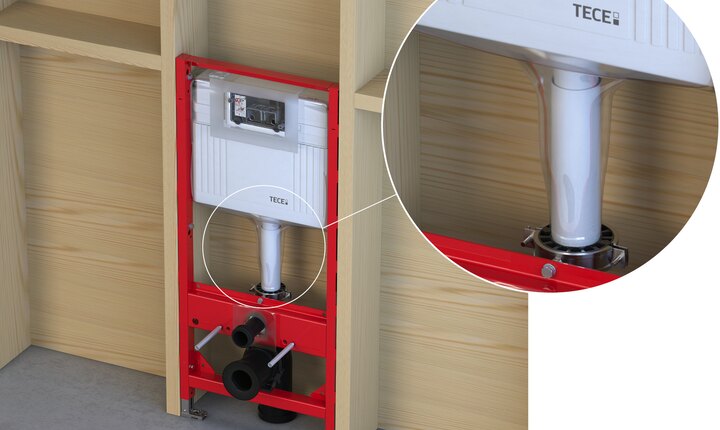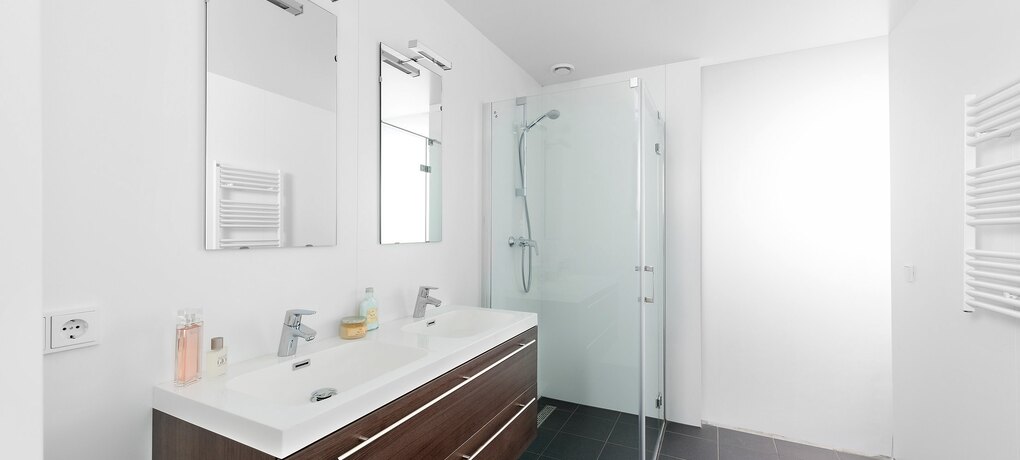
No bathroom is the same as the next
Building bathrooms in other countries
A bathroom is a bathroom is a bathroom is a bathroom... Thanks to international mega trends, bathrooms around the world are becoming more and more similar. The route to the finished bathroom, however, differs by culture, building structure and the status of standards from country to country, sometimes significantly. This poses high requirements for an internationally active housing technology manufacturer such as TECE. From highly individualised bathroom construction, bathrooms off the peg, extra narrow and packaged cisterns – a look at country-specific peculiarities in bathroom installation using Italy, Norway, Russia and the Netherlands as examples.
Russia: Highly individualised bathroom construction
Anyone who buys an apartment in Russia usually receives it in its raw state – and the same of course goes for the bathroom. The market for turnkey apartments may be gradually growing, however normally the buyer has to ensure themselves Building bathrooms in other countries that the screed is laid, walls are erected, and internal doors or even windows are fitted. How the heating and water pipes that branch off from the risers in the stairwell or lift shaft are cladded in the apartment is also left to the homeowner. This means the living spaces are very individual, designed to the homeowner's taste and generally cheaper than turnkey apartments. In an apartment building, however, this not only leads to a range of trades but also a variety of companies in one trade working in the building for months at a time. A solution like TECEprofil is very popular here because the flexible system makes it possible to complete a whole range of tasks in interior construction and thereby adhere to the applicable safety provisions, regulations and standards. Even with turnkey apartment it isn't unusual to upgrade the sanitary furnishings and pipelines with higher quality products such as TECEdrainline or TECEflex.
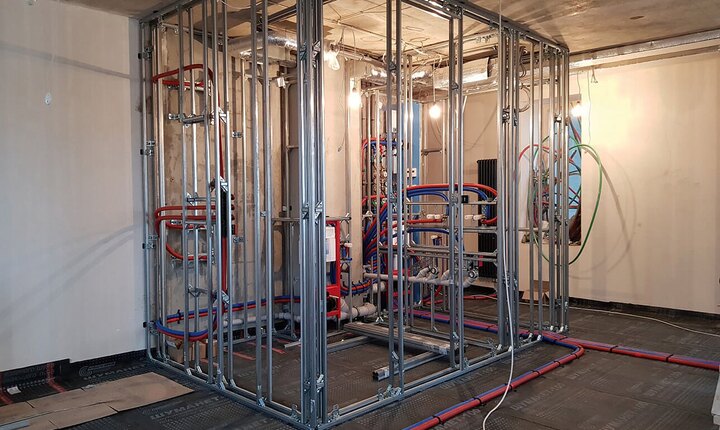
Netherlands: The bathroom off the peg
Prefabricated bathroom units represent a continuously growing market segment in the Netherlands. They are delivered to the construction site ready for connection with all of the electrical and sanitary interfaces in order to reduce the time required for installation as well as the number of trades required on site. The advantages of prefabricated assembly units range from ensuring consistently higher industrial, standard-compliant quality through to the efficient use of resources. This makes these solutions of great interest primarily for large residential complexes as well as for public and semi-public buildings like hotels, hospitals or student residences.
This kind of bathroom unit is produced, for example, by the Dutch firm De Mors within five working days and the net work time required for assembly comes to around 24 hours. This is only possible because it is manufactured on the basis of 3D information which is fed into the production machines of suppliers like TECE. The “open” TECE system technology offers immense advantages here because the trades of sanitation, heating, dry-wall construction, ventilation and conduits are amalgamated through the industrial prefabrication and the preassembled components are supplied custom-fit for final assembly. Here they simply need to be put together in a plug & play process.
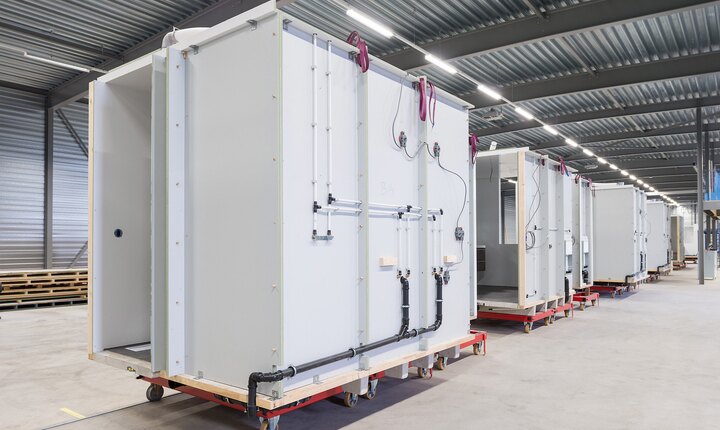
Netherlands. Tailored, industrial prefabrication is obligatory. Photo: De Mors /Henk van der Stouw
Italy: Extra-narrow cistern for brick walls
Over two-thirds of the housing in Italy is more than 30 years old, the construction of new homes has fallen from 368,000 units in 2007 to 105,000 units in 2017. The internal walls in most existing buildings are traditionally made out of eight centimetre-wide bricks. This poses special requirements for the cistern as well as the sanitary installations when it comes to installation depth, load bearing and sound insulation. So TECE has come up with a special version of its cistern for Italy. The TECEbox Octa is just eight centimetres deep and its design and components ensure a high level of sound insulation and thoroughly simple maintenance. As a rule, the cistern is incorporated into a brick wall and used together with a floor-standing toilet.
With wall-hanging toilets and bidets, which now make up almost 50% of sales in Italy, an installation module must provide hold and stability and withstand loads of up to 400 kg. If the wall allows for hidden assembly of the TECEbox Octa module, the frame and covers can be concealed in the wall and the installation can be easily grouted or tiled. New provisions for earthquake safety, new construction methods (1 in 14 new homes is built out of wood) and changing demands on the overall look of the bathroom (wall-handing instead of floor-standing) have led to a significantly increased demand in the last five years for dry-wall modules with a stable metal frame such as TECEconstruct 8 cm.
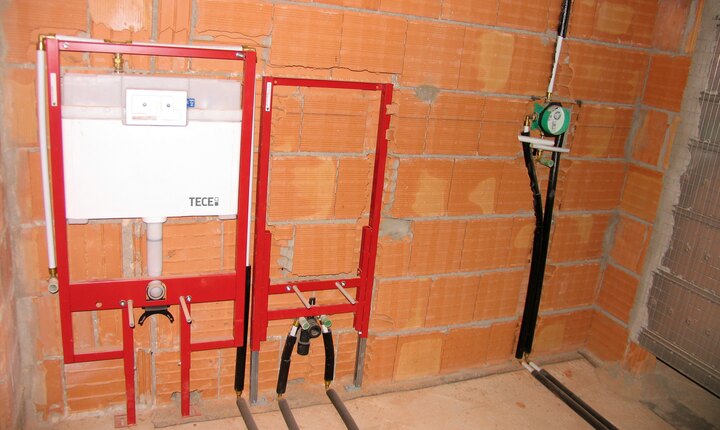
high level of sound insulation.
Scandinavia: Cistern with “rubber” in wooden construction
Wood is a material that is widely used in Scandinavia's building construction. Since this natural material reacts more sensitively to humidity and leaks than e.g. stone and concrete, several Nordic countries have strict provisions in order to avoid water damage. In Norway, for example, a watertight barrier must be installed behind the cistern that is intended to prevent leaks from penetrating into the wall and damaging the building structure. Sweden also has strict provisions, which is why wall-hanging toilets here only account for a market share of 20%.
TECE has designed a TECEprofil toilet module with a so-called safety bag especially for these markets. The safety bag is a watertight bag made of strong, anti-ageing PVC that encloses the cistern and flush pipe elbow. The module is easy to install – all that's required is a watertight barrier in front of the cistern, the intensive process of installing a watertight barrier behind the module is removed from the process. This saves time and money during installation. If the cistern ever leaks, the safety bag catches the water and carries it between the tiles and bottom of the toilet into the sealed bathroom. Leaks within the wall that could lead to significant water damage are thus avoided.
